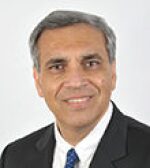A step change is noticeable in the quality of papers from the previous 2 years. First, the papers have better technical content; second, they are pushing the boundaries of currently accepted technologies and mores. Perhaps this is because of a desire to produce from ever-more-difficult and -challenging wells. The current energy crisis and higher prices as a result have encouraged the application of new technology, which, in a low-energy-price environment, generally takes a back seat. This is a good thing for the technology junkies of this world.
A few technology areas are worth mentioning. Although ceramic sand screens have been around for a few years, this year there were more than the usual number of papers on this technology. For those interested in probing the operating limits and life span of these screens, paper OTC 31896 is worth reading.
Sand consolidation continues to be a subject of interest, perhaps because of its noninvasive nature. Besides, it is potentially low-cost and has been used widely with success. This year, there were 10 papers on the subject. An interesting paper worthy of mention is SPE 208808, which introduces a novel temperature-activated, “green” consolidation fluid.
In paper SPE 207193, the authors propose a fast and accurate machine-learning algorithm to predict the onset of sanding in sandstone formations. The algorithm uses 11 geological and reservoir parameters that directly affect sand production. The answer is binary (i.e., sand production will or will not occur). This could be a great tool for completion engineers.
Finally, there was extensive coverage of sand management in the topsides, an area often overlooked. This trend is encouraging. Paper OTC 31554 is thought-provoking. It discusses the first field installation of a patented device that modifies the flow profile to alleviate the impact of solids at critical points.
I hope you enjoy the papers.
This Month’s Technical Papers
Downhole Sand Control Applied for High-Rate Gas Completions in Deepwater Malaysia
Integrated Completion Design Method Predicts Sand Production
Passive Acoustic Tools Aid Analysis of Sand-Screen Completion
Recommended Additional Reading
OTC 31872 Improving Erosion Wear Life of Completion Equipment in High-Flow-Rate Conditions by Numerical Design Optimization for Influx Equalization by Gocha G. Chochua, Schlumberger, et al.
SPE 208839 Completion Standardization Using Conformable Sand-Screen Technology in Multilayered Ultrafine Sand Reservoir by Ricardo Gomez Simancas, Cabinda Gulf Oil, et al.
SPE 208845 A Comprehensive Review of Sand-Retention Test Methods and Data Analysis With a Focus on Application by Tanner Linden, Constien and Associates, et al.

Imran Abbasy, SPE, has 35 years of industry experience with a major service company and several midsized and large operating companies. He has held technical and leadership roles in production technology, drilling, completion engineering, and operations. Abbasy has worked in the North Sea, Middle East, Australia, Indonesia, and Papua New Guinea, supporting completion design, artificial lift, well integrity, and production optimization. Until late 2020, he managed a mature producing asset in West Africa before becoming a freelance consultant. Abbasy has authored several SPE papers and participated in SPE Applied Technology Workshops. He holds a bachelor’s degree in mechanical engineering and a master’s degree in aerospace engineering.

